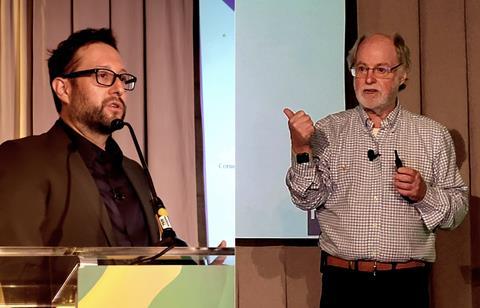The first genetically modified TR4 resistant Cavendish banana is here, but a conventionally bred version could still be some years away
New gene editing techniques are powering the race to develop TR4 resistant bananas. Two different approaches were presented during the first day of the International Banana Congress in Miami – one using the technology to accelerate the conventional breeding process and the second to develop a genetically modified Cavendish banana capable of withstanding the disease.

Netherlands-based plant research company KeyGene uses cutting-edge DNA analysis to develop new varieties. Fernando García Bastidas, who heads up the company’s banana breeding programme, said advances in gene editing tools have helped it to speed up the process significantly. “There are more than 1,200 banana varieties. This is a goldmine for us as we can select genes from any these varieties,” he told the conference.
For more than a decade KeyGene and Wageningen University & Research have been screening these different banana genotypes for resistance to TR4, using the latest RNA and DNA technologies to identify traits at seed or tissue culture level and promote germination.
Having whittled these down from thousands to a few hundred, they set up a crop innovation centre in partnership with Chiquita and biotech startup MusaRadix to grow and evaluate the most promising contenders.
Initial results show partial resistance to both TR4 and Black Sigatoka. “We have the first bricks to build a new Cavendish banana or create a new Cavendish banana type, but this is still some 6-10 years away,” García said.
In Australia, meanwhile, Queensland University of Technology has developed a genetically modified (GM) variety of Cavendish banana, that is highly resistant to TR4 and is now applying for the license to grow the variety commercially.
“We finally identified a gene with good resistance that we were able to transfer into Cavendish,” explained James Dale, who began the project more than 20 years ago. “The first small field trial in 2012 revealed that most of the plants showed a very high level of resistance.”
In 2017 the team embarked on a much larger trial, the Darwin field trial, which has enabled them to gather valuable data on how Fusarium spreads through a field, and the way it affects Cavendish bananas over several generations.
According to Dale, one of the new resistant lines tested, QCav-4, showed 0 per cent infection after three years of planting, compared to high levels of infection in the control groups. There was also no impact on yield after five cycles. After six crops, QCav-4 had only two harvests out of 300 which were lost to TR4 infection.
“We’re pretty happy with the outcome,” Dale said. “But unfortunately, not everyone is as enthusiastic about GM bananas as we are, so now we’re moving towards a gene edited version of Cavendish using CRISPR/Cas9 technology.”
Small-scale greenhouse tests of the most promising non-GM edited lines are already underway with the first ones due to be planted in the field in August 2023. “We’ll have some idea of the levels of resistance achieved within 18 months,” Dale said.






